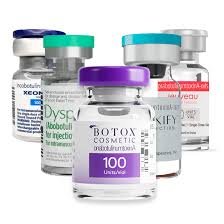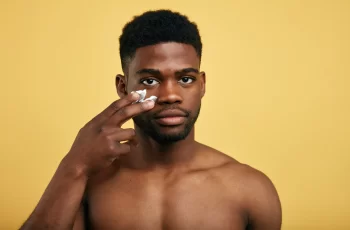
The New Guide to Botulinum Toxin (Botox): Which Type Is Best for You?
When someone says they “get Botox,” they may not mean exactly what you think. Indeed, there are four related injectables on the market: Botox, Dysport, Xeomin, and Jeuveau, and they all use botulinum neurotoxin to smooth out wrinkles and lessen the signs of aging in the same way, though there are many misconceptions about how that happens.
“Many people think they’re fillers, but they’re paralyzing agents. These injectables stop the transmission of the electrical impulses from the nerve endings to the muscles, meaning the muscles cannot contract normally,” says Phillip R. Langsdon, MD, a facial plastic surgeon in Germantown, Tennessee, and a former president of the American Academy of Facial Plastic and Reconstructive Surgery (AAFPRS). When you can’t move the muscle, the expressions you make with your face can’t create the fine lines and wrinkles that etch in over time and take up permanent residence on your face. (Though when it’s done right by a trained professional, you won’t look “frozen” or expressionless.)
These wrinkle-reducing effects don’t usually happen overnight — while muscle activity usually ceases within 5 to 15 days of the injection, it can take up to four weeks for the change to be noticeable, according to a meta-analysis published July 2021 in the Cochrane Database of Systematic Reviews, which analyzed 65 randomized controlled trials of neurotoxins used for treating facial wrinkles. Researchers further note that Botox is not without risk, with the most common side effect being ptosis (a drooping eyelid).
Along with Botox, Dysport, Xeomin, and Jeuveau, a neurotoxin called daxibotulinumtoxinA (Daxi), may soon be approved by the U.S. Food and Drug Administration (FDA) for the treatment of glabellar, or frown, lines, according to Revance Therapeutics (the company that developed Daxi). Daxi may be in doctor’s offices as soon as fall 2022, which would make five neurotoxin options available to you.
Even within the Botox umbrella, there’s been a growing interest in specific types of treatments using these injectables, including “Baby Botox,” “BlowTox,” “BroTox,” “NewTox,” and “Budget Botox.”
Here’s what they all mean, how to choose the right treatment for you, and must-know warnings before you go.
Baby Botox: Best for People Looking to Prevent Signs of Aging
Depending on whom you ask, you’ll get differing opinions on exactly when someone would benefit from starting Botox.
“For younger patients, Botox may help prevent or slow down the progression of lines, particularly around the eyes, eyebrows, and forehead,” says the facial plastic and reconstructive surgeon Patrick J. Byrne, MD, the chair of the Head & Neck Institute at Cleveland Clinic in Ohio. (“Younger” is relative; Dr. Byrne says he sees some patients in their late twenties.)
“‘Baby Botox’ is a term that often refers to the desire for subtle, rather than more dramatic, changes,” says Byrne. In this event, the doctor would inject smaller amounts of Botox. “Baby Botox is really a reflection of an ongoing trend towards broadening the market to offer smaller, more subtle changes to a larger pool of interested patients,” he says.
One place this can be especially effective: the brow. “In younger patients, Botox can be utilized to affect the balance of muscles. We can lift the brows, shape, and give them contour,” says Byrne.
BlowTox: Best for People Looking to Stop Scalp Sweating
Dealing with an overly sweaty scalp? Botox may be able to help. Nicknamed “BlowTox,” this is Botox injected into the scalp to prevent perspiration.
For some people, this excessive sweating signals a medical condition called hyperhidrosis, according to the International Hyperhidrosis Society. (Your doctor or medical provider can help you determine whether this is the case.) For others, it’s a matter of keeping a sweaty scalp at bay to preserve a hairstyle.
When your scalp sweats — such as in the summer heat or after a hard workout — hair can fall limp and lifeless. For women who get routine blowouts — a salon treatment where the hair is professionally blow-dried — BloxTox may be attractive. “There’s been a growing trend to superficially inject Botox into the scalp to help your blowout last longer,” says Joshua Zeichner, MD, the director of cosmetic and clinical research in dermatology at Mount Sinai Hospital in New York City.
It makes some sense: “Botox has been reported to reduce both sweating and oil production. In fact, it’s FDA-approved for the treatment of excessive underarm sweating (hyperhidrosis),” says Dr. Zeichner. Botox injections block the chemical messenger that triggers sweat glands, the International Hyperhidrosis Society explains. When you reduce oil and sweat in the scalp, your hair won’t be bogged down with grease and wetness, Zeichner adds.
The downside? Treatments are expensive, says Zeichner, because a lot of Botox is needed to cover such a large area. And because results last three to five months, you’ll need two to four treatments per year to maintain your sweat-free scalp.
BroTox: Best for Guys Who Want to Get in on the Anti-Wrinkle Treatment
Don’t think that botulinum toxin therapy is just for women. In fact, one of the most common surgical and nonsurgical procedures for men is neurotoxin, according to a 2021 AAFPRS report. The plastic surgeons surveyed said their male patients used rejuvenating treatments with the goal of staying “relevant and competitive at work.”
One of the most popular areas to target? The “11s.” “Many men have deep frown lines between the brows. When those lines are deep, it makes a person look older or even angry,” says Dr. Langsdon. He also says that many men get Botox in both the crow’s-feet and frown line areas, which may have the result of lifting droopy brows — and making someone appear more awake or less serious.
Jeuveau (‘Newtox’): Best for Ex-Botox Users
The latest buzzword refers to a recent neurotoxin injectable on the market: Jeuveau. A press release from 2019 announced that its maker, Evolus, had secured FDA approval for the treatment of moderate to severe glabellar lines, which are the lines between the brows. At the time, the injectable was dubbed “Newtox.”
Jeuveau may be new to the injectable space, but experts have seen good results. “Although Jeuveau is almost identical to Botox, it seems to work better for most people,” says Ben Talei, MD, the owner of the Beverly Hills Center for Plastic and Laser Surgery in Beverly Hills, California. One reason: Longtime users of Botox may find that they become resistant to it over time. “We hear patients tell us all the time that Botox used to work better for them years ago, even though we’ve been weakening the muscles over time with the injections,” he says. In this case, you may want to ask your doctor if making the switch is right for you.
Another potential perk: Jeuveau is thought to work quickly, says Dr. Talei. In one study published in March 2019 in the journal Dermatologic Surgery, the researchers reported that people using Jeuveau saw a “marked difference” in aesthetic improvements during the first post-treatment visit on day two, compared with the placebo group. In addition, a study published in Dermatologic Surgery in June 2022 had an interesting finding: When it was used to treat frown lines, people in the millennial age group responded better to Jeuveau than adults born in 1981 or before. They noticed a faster onset and longer duration of the neurotoxin, potentially because younger folks had less-pronounced lines that responded to treatment more visibly. What’s more, when used regularly, the appearance of lines may improve even when at rest, and the authors suspect this may be due to soft tissue changes after repeated use.
Budget Botox: A Dangerous Cosmetic Trend to Avoid
In a disturbing trend, people may turn to DIY Botox, learning how to inject the toxin into their face via online videos. A study published in August 2018 in the journal Plastic Surgery outlined the problem. Researchers looked at four online discussion forums on the topic and noted that prospective patients were buying unregulated Botox kits online, watching YouTube tutorials, and downloading “Botox injection maps” from the internet. More worrisome, the authors pointed out that people knew that what they were doing was risky, but used their sense of agency over their own bodies and decisions as a justification.
It goes without saying that self-injecting Botox isn’t safe; these injections require a properly trained doctor to administer. Plus, there’s a very real chance that formulations purchased online are counterfeit. Injecting any product that you can purchase without a medical license carries real risks, including long-term muscle paralysis, Bell’s palsy, and permanent eye damage, notes the American Academy of Dermatology. For your health and safety — and the best outcome — seek out an appropriately trained and licensed physician, advises Byrne. To find out if the healthcare professional administering your Botox is legit, take advantage of the free “Is My Doctor Board Certified?” search tool offered on CertificationMatters.org.


